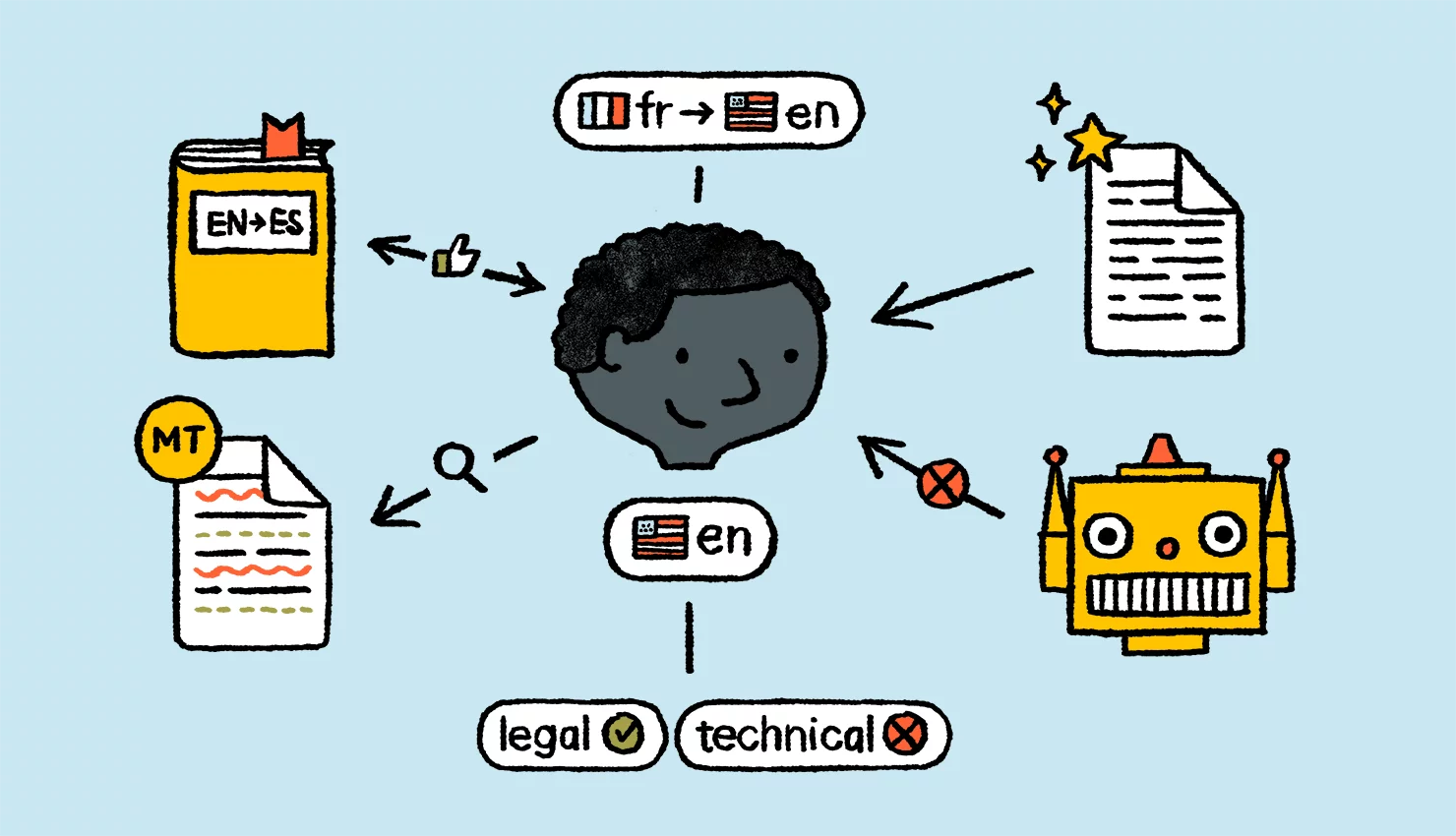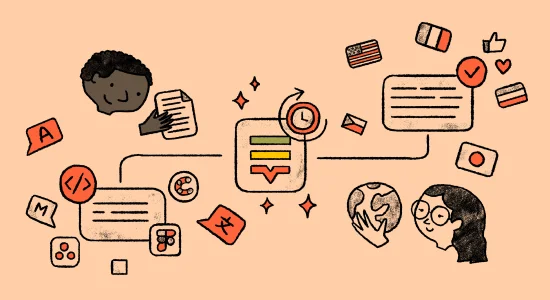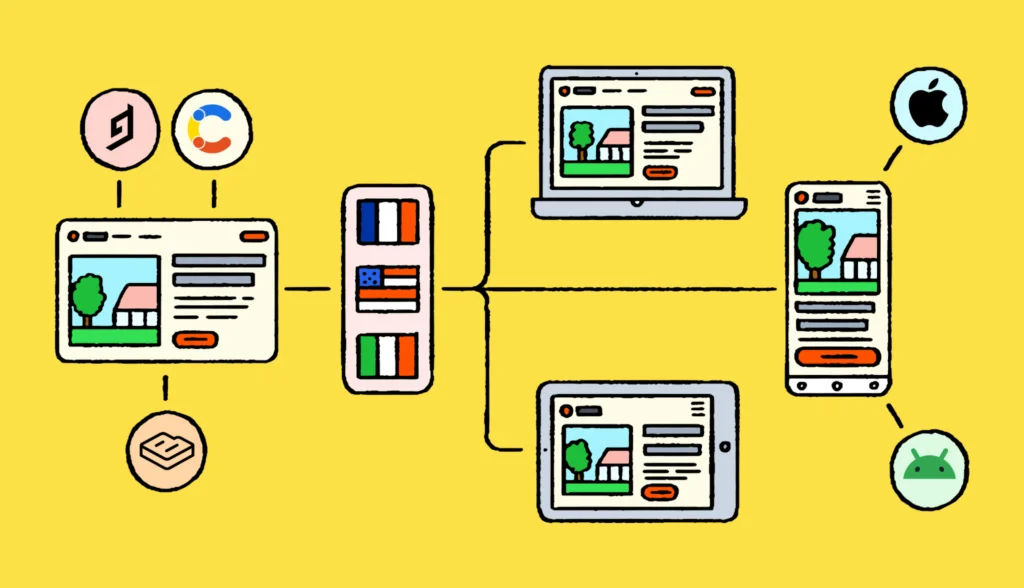By 2021, it’s estimated that the rising demand for businesses to go global will grow the language services industry to a market size of over $56 billion. Translation is at the core of this growth and key to entering the global marketplace. Websites, documents, marketing materials, user content—it all needs to be accurately translated so that brands can connect with new customers in new markets.
Translation doesn’t have to be difficult, but it does need some planning and the nuances of this critical process may not be well understood by companies just starting their global journey. Here are our top 12 tips for making translation work for your business.
1. Translators should be native speakers
For your brand to have global success, you need to connect with your audiences and potential customers in each local market. Who better, then, to translate your content than translators who grew up there? They have experienced the culture first-hand and know the nuances of the language. Sure, a bilingual person–someone who is fluent in the required languages from studying and/or living abroad–may be able to translate, but are their translations local enough for the target audience and do they accurately represent your brand for that market?
Native speakers of the target language who reside in-market ensure that content is adapted fully to the local market and reflects its preferences, culture and behaviours.
2. Translation and interpretation are not the same thing
Interpreters focus on the spoken word. They provide ‘verbal translations’ in places like courtrooms, conferences and business meetings. Interpreters need to think on their feet to keep up with the pace of conversation. Due to the nature of the work, speed takes precedence over accuracy.
Translators, however, work with written text, so accuracy and quality are far more important than speed. For some content types, translation is a creative process and requires practical experience with the subject matter. Since the roles involve different skills, an interpreter will not necessarily be a good translator and vice versa.
3. Machines will never replace translators
Employees in nearly every industry fear that their jobs will one day become obsolete due to the rise of machines. Translators are no exception. Machine translation (MT) has evolved a lot in recent years, but still has a long way to go to replace human translators. MT engines can translate words, but they struggle with nuance, slang and emotion.
Machines can improve productivity and help a business handle larger volumes of work, but a human touch is required for certain types of content. In the end, translation is a creative art form and machines are just not there yet. So, it’s humans and machines, not humans or machines.
4. Post-editing optimizes MT content
The quality of MT is improving all the time, but it often doesn’t meet the quality requirements for certain types of content. Financial is a good example. This is where post-editing comes in. It allows brands to enjoy the speed and cost savings of MT without sacrificing translation quality.
Organizations use different levels of post-editing, namely light post-editing and full post-editing. Light post-editing only checks MT output for accuracy and grammatical errors. It’s good enough for content with low visibility like user-generated content or FAQs. Content that is highly visible like marketing copy or that requires a high level of accuracy requires full post-editing.
5. MT post-editing is different from editing or translating
Post-editing is a different process than standard review or quality assurance practices. Post-editors are trained in how to review machine-translated documents. They know what errors to look for and how to correct them. Also, a post-editor will be trained in how to tailor their edits to what the client requires—light versus full post-editing.
6. There is never only one correct translation
While it would be great if there was only one correct translation for each piece of content, the reality is that no two translators will provide the same translation. Both may be accurate, but there will be differences in style, terminology and grammatical structure. Ultimately, choosing one translation over another is subjective.
7. High-quality translations require glossaries, style guides and quality guidelines
Translators engage in a creative process to produce high-quality content for clients. Since expectations can differ from brand to brand, style guides and glossaries are needed to provide guidance to the translators. Translation memories, style guides and terminology databases help standardize translations and bring consistency and clarity to a brand’s message.
8. Subject matter experts should translate for specific industries
Highly specialized domains like financial, legal and life sciences require highly specialized translators. A translator that lacks experience in a field will be unable to understand and adequately translate technical content. They may be able to provide grammatical accuracy, but not accuracy of the translation. Subject matter experts have deep levels of understanding and play vital roles in ensuring that content is accurate.
9. Source content greatly impacts quality
Source content quality and translation quality go hand in hand. If text is ambiguous, translators will be forced to guess the intended meaning and may get it wrong. If the author of the source text is not available to answer questions, translators will rely on their experience and research skills to provide the best translation.
High-quality source content that is clear, concise and complete removes the chance of error. Content development teams should know the best practices for writing for localization.
10. Test translations don’t let you know what quality to expect
Test translations are often part of the request for proposal (RFP) process, but there are several reasons why they’re not a reliable measure of project success.
First, vendors will do everything in their power to win the project, including putting their best translators on the test. These are translators that may not end up on the project team. Second, test translations are often evaluated by parties that are not objective, such as an in-house translator concerned about their job security. Finally, they’re not an indication of what the long-term relationship will be like.
Rather than rely on test translations, a better plan is to evaluate real translation samples from the vendor’s clients.
11. Bilingual employees are not the best choice for quality reviews
Employees that speak more than one language serve many important functions but translating or reviewing content is not one of them. Translators are, as we’ve mentioned, professionals with linguistic education and industry experience as well as knowledge of translation tools and best practices.
Individuals that lack this training and experience won’t help you produce accurate, high-quality translation. Many businesses prefer to add a third-party linguist quality assurance (QA) service to confirm translations.
12. Different documents require different translator qualifications
Marketing content is different from software, and user manuals are different from user-generated content (UGC). A translator may be able to creatively adapt marketing materials, but that does not mean that they are suited to translate software UI strings or a service manual.
Technical documentation requires clear, consistent and structured content, while advertising materials like websites and social media ads need a high level of creativity and the ability to translate the entire brand to speak to a local target demographic.
As technology moves us closer and closer to a global economy, translation is the gateway for brands to enter new markets. Having knowledge of translation processes, professional qualifications and strategies will give you the basis for building a strong translation program, which in turn will give you a solid foundation for global success.




